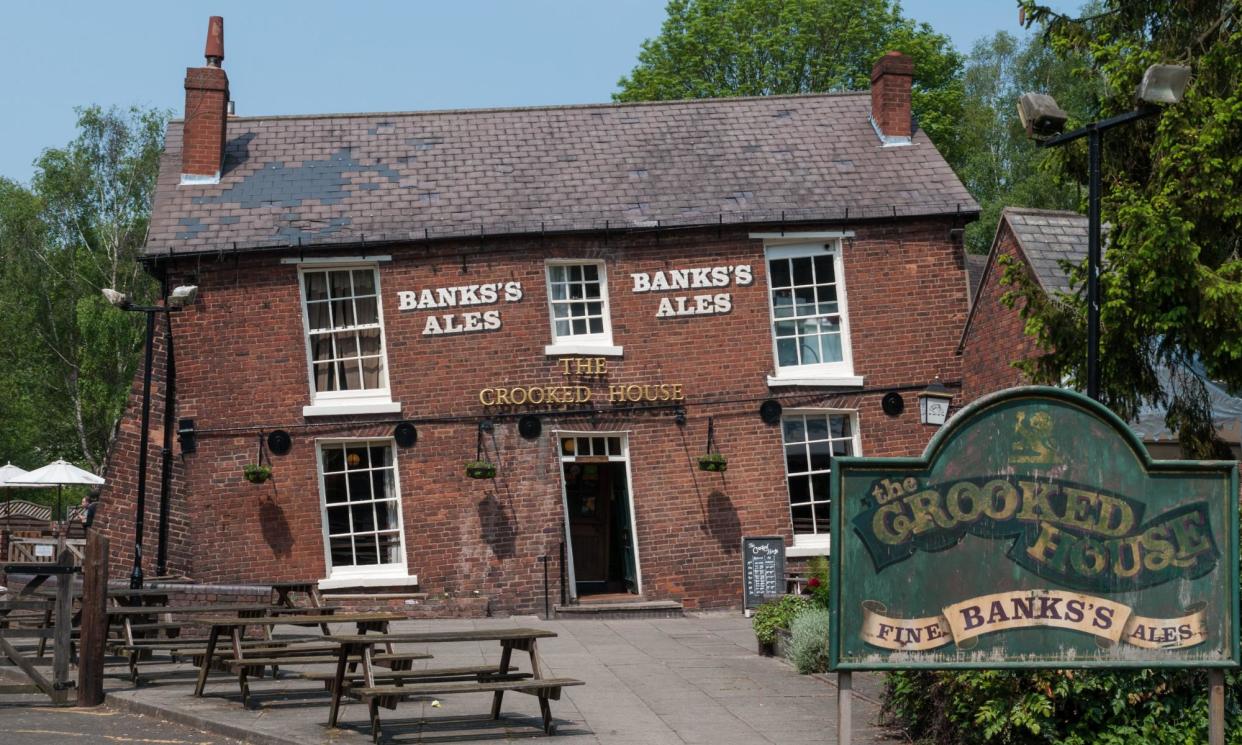‘It’s a monkey’s puzzle’: is it possible to rebuild the Crooked House pub?

Rebuilding a 260-year-old building that was burned to a shell and then bulldozed to a pile of rubble is no mean feat in any scenario. But rebuilding the Crooked House pub, a lopsided structure that had sunk 4ft into the ground, is even trickier.
“It’s a bit of a monkey’s puzzle, with no right angles,” said Stephen Levrant, who runs a heritage architecture firm. “Because everything is out of kilter and you’ve got gravity acting in a completely different way, it will have to be approached as if it was quite a sophisticated modern structure.”
Last week, the owners of the Crooked House pub in Himley, Staffordshire, were served with an enforcement notice demanding that they rebuild the venue to exactly how it was before a fire – which is being treated as arson – gutted the property.
They have three years to get the job done, if they don’t appeal against it. Experts say rebuilding the pub in its original wonky form will be tough and probably very costly, but not impossible.
“The physical problems of constructing it are not insurmountable by any means, it’s just going to take a bit of effort to engineer the building,” Levrant said.
“The debate will rage on about whether it’s worth doing, because some people say you’ll end up with something that has no historic value. But what will be recreated is the character, the ambience, and the cultural meaning of that property. So I think that’s worth doing.”
Most people who visited the Crooked House said the building made customers feel drunk before they’d taken their first sip due to its wonky floors, with marbles appearing to roll uphill.
The building, constructed in 1765, sat at a 15-degree angle after gradually sinking into the ground due to subsidence possibly caused by coalmining or a nearby waterwheel.
It was originally strengthened with buttresses in the early 20th century, but by the 1940s the building was considered unsafe and scheduled for demolition. It was then strengthened again using steel rods, which kept it upright until the night of the fire in August last year.
“The existing foundations may have survived the fire but I can’t imagine they’ll be usable. So you would have to start from scratch,” Levrant said.
“We would probably start with concrete raft foundation to spread the load and counter the problems with subsidence, and then start building angled structures. I imagine they would have to be in steel with concrete reinforcements. It will take a lot of planning, a lot of drawing and a lot of calculation.”
The Black Country Living Museum proved it could be done when it successfully rebuilt a wonky home, known as the Tilted Cottage, on its site.
Built in about 1847, the cottage was home to the Bradley family in Gornal Wood, on the edge of Dudley, and like the Crooked House it was affected by subsidence as coal was dug from the nearby mines.
After the death of Jerushah Bradley in 1984, the museum spent 15 weeks dismantling the cottage and then another three years rebuilding it on site – with the tilt still in place.
Related: Crooked House scandal highlights government inaction over pubs, says Camra
“It can be done, we just had to lay a foundation deliberately at that angle so that when the building was put up, it was 10 degrees off,” said the museum’s chief executive, Andrew Lovett. “So it can be done, for sure.”
Local campaigners who have been pushing for the Crooked House to be rebuilt hope their efforts to have 23,000 bricks salvaged from the site and stored in containers will go some way to helping the rebuild.
“One of the very first things that has to be done is a kind of archaeological sift through the remains so the bricks are a good start,” Levrant said. “It’s a lot of work but because this building has such cultural, philosophical and historical meaning to people, it’s worth doing. History never stops, the rebuilding of the pub becomes part of its history.”


